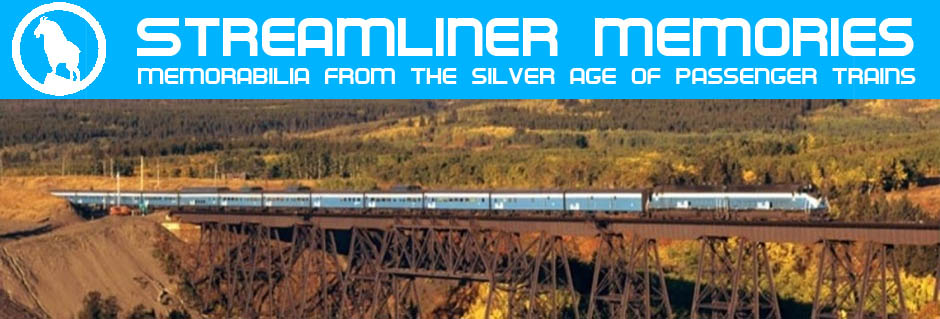The Golden Age of passenger trains in the United States lasted from the late 1890s (as the economy recovered from the Panic of 1893) to 1929. As many as 9,000 intercity trains per day connected cities all across the country. Total rail travel and per capita rail travel both peaked in about 1920, and–except for a brief period during World War II–has steadily declined since.
While you could go just about anywhere you wanted by train, the trains in the Golden Age were outwardly boring. Due to Pullman’s monopoly of sleeping car service, most railroads painted their trains the same as Pullman, a green that is so dark it is almost black. None of the trains were very fast, most averaging just 20 to 30 mph, with a few “crack” trains averaging all of 40 mph.
Change came when first the automobile and then the Depression ate into rail ridership. The railroads responded by developing flashy trains of either bare stainless steel or painted bright colors such as yellow and orange. Speeds increased, with many trains averaging over 60 mph, including stops, and some reaching top speeds of more than 100 mph. Train comfort also increased, particularly for coach passengers, with ergonomically designed seats, more legroom, and improved food service.
Streamlining is a version of art deco sometimes called streamline moderne. As a social commentator on another web site points out, “Art Deco is not modern but moderne, which is almost the exact opposite. ‘Modern’ design values only the functional and eschews all ornament; moderne design insists that the functional must be made artistic before it can show its face in public.” In the case of trains, streamlining saved energy at speeds over 80 mph, but most trains never went that fast. Streamlining of those trains was not functionally essential, but it signaled to the public that the train was capable of going faster than in the past while offering its passengers comforts such as air conditioning, reclining seats, bright cheery decor, and reliable service.
Thus, the Silver Age of passenger trains began in 1934 with the introduction of the Union Pacific M-10000 and Burlington Zephyr, and continued through 1971 when Amtrak took over most of the nation’s passenger trains, thus initiating the Bronze Age. For a few more years, people could enjoy Silver Age trains on the Southern and Rio Grande railroads, but by 1983 these too were taken over by Amtrak, which dropped the artistic pretensions, not to mention the comfortable seats and reliable service.
Today, Silver Age trains exist only in a few museums and in the memories of millions of people still alive who rode those trains. This web site aims to help people remember by making available brochures and advertising issued by the railroads about the trains as well as on-board items such as menus and stationery.
